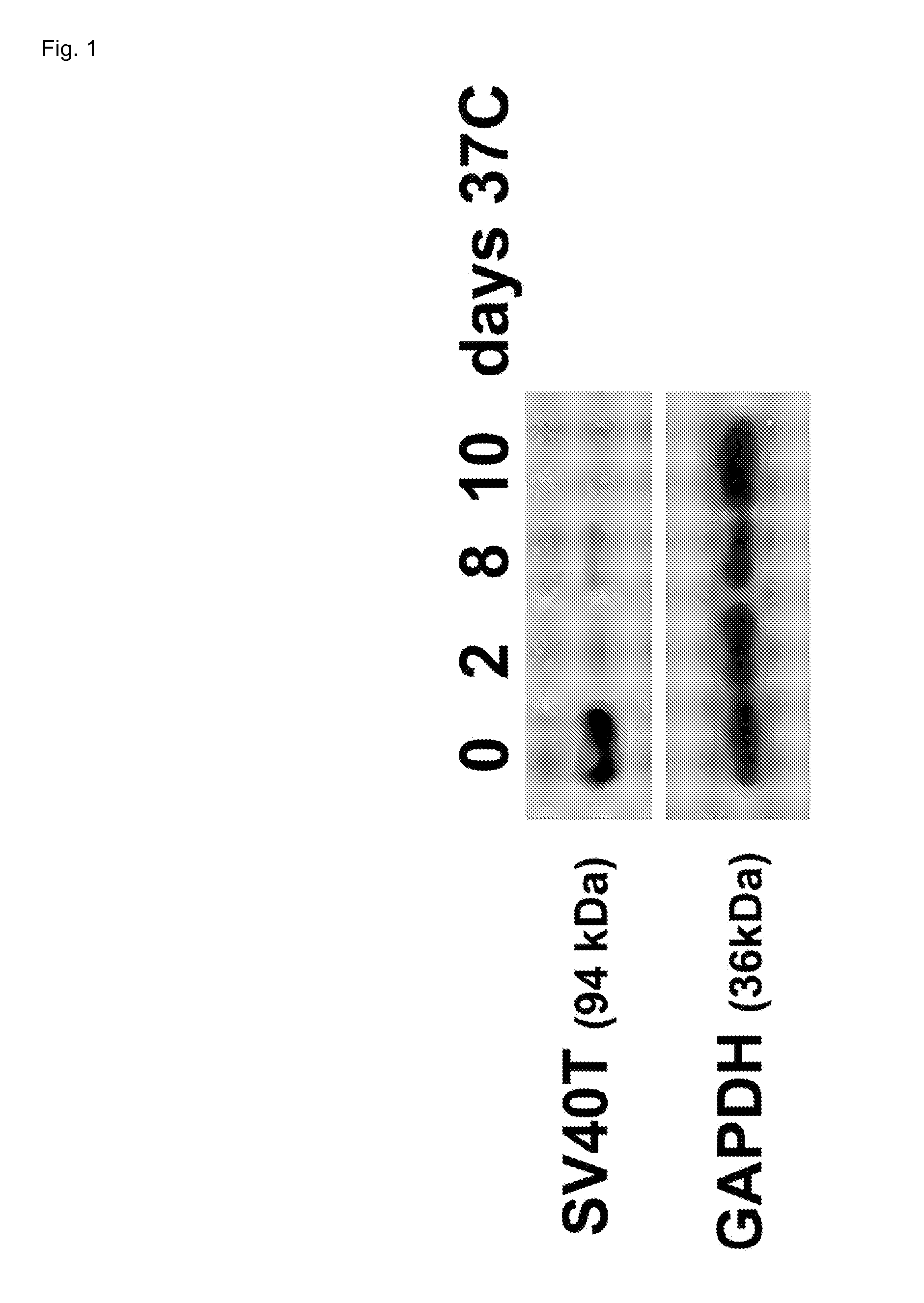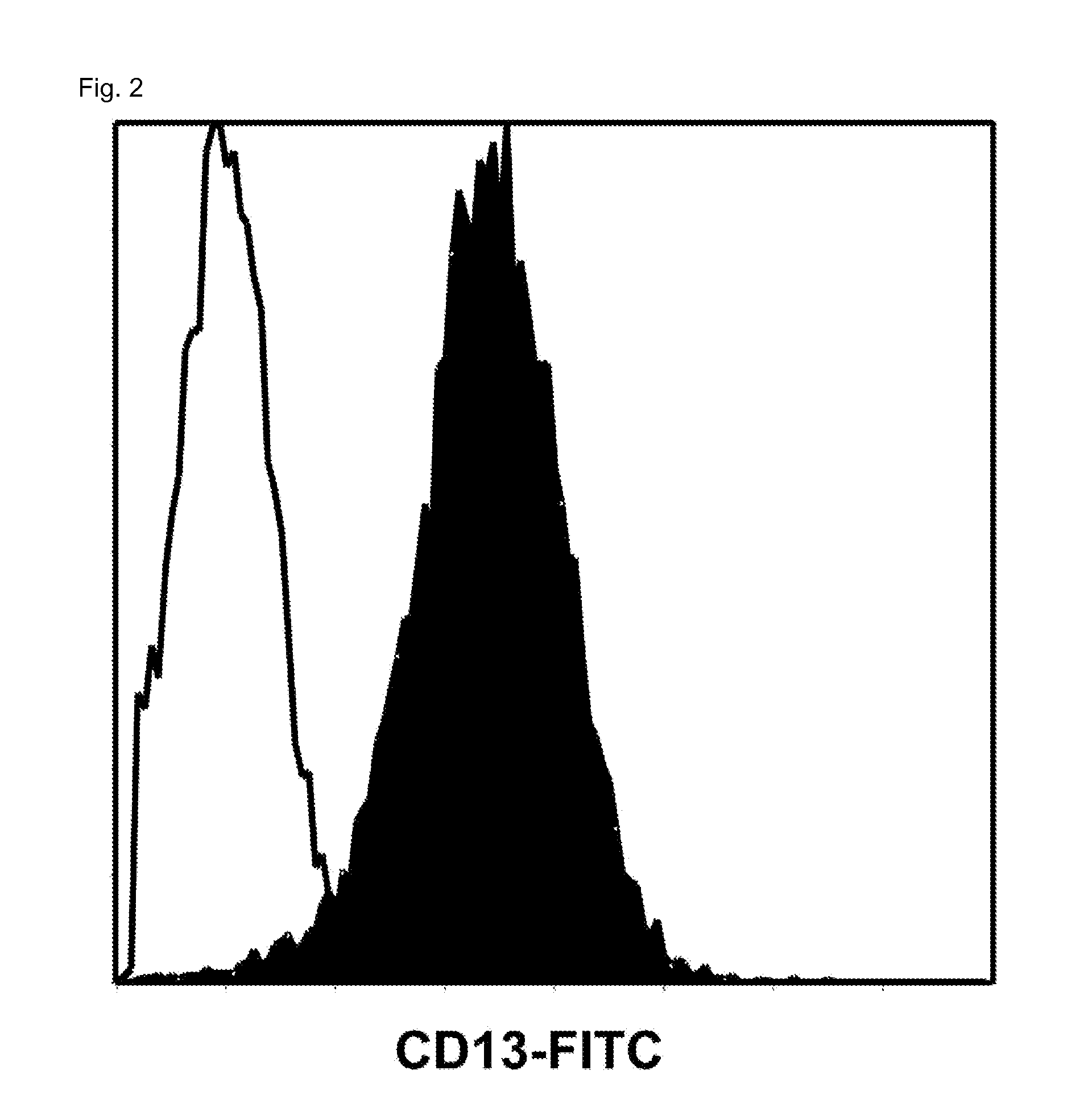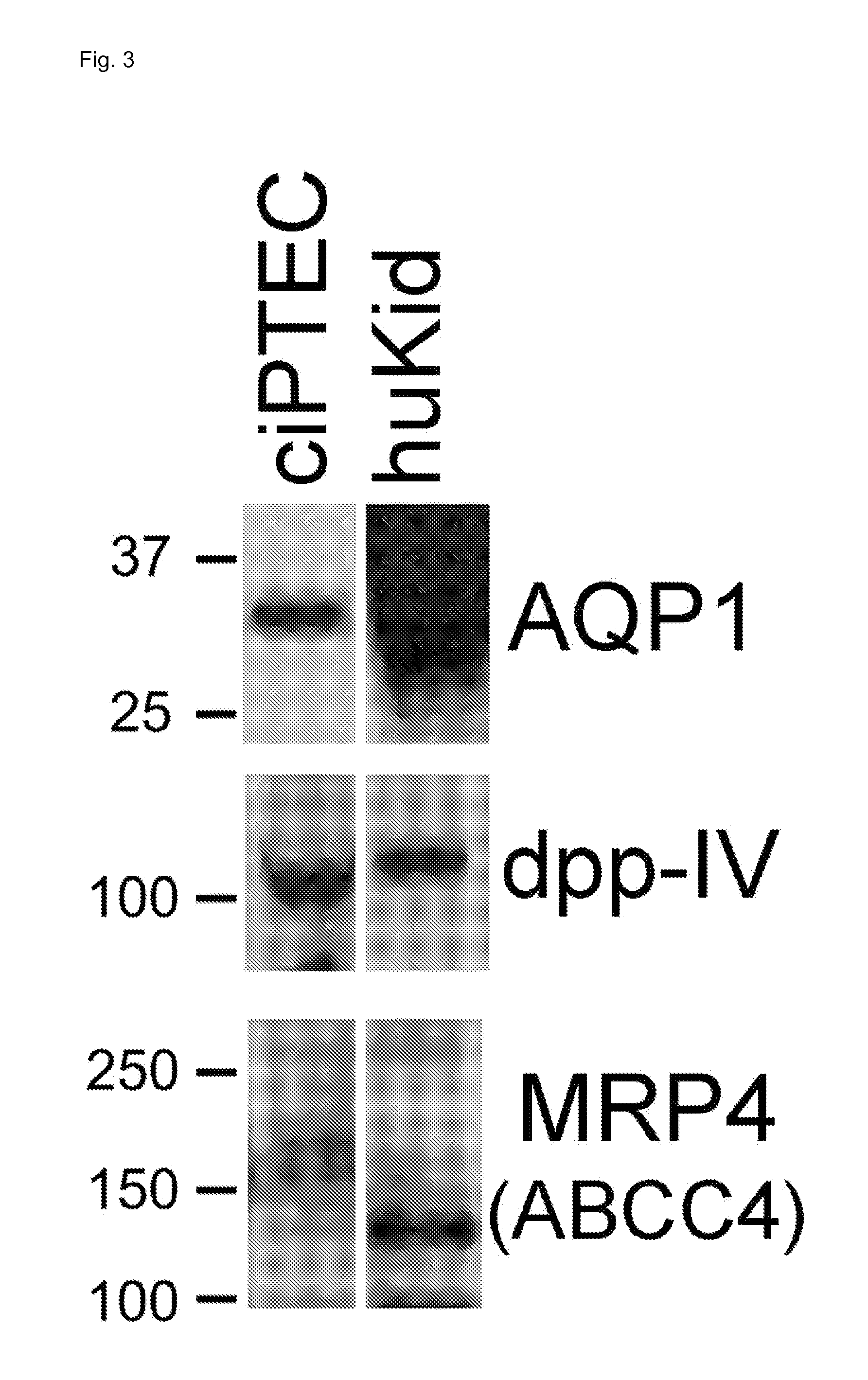Novel conditionally immortalized human proximal tubule cell line expressing functional influx and efflux transporters
a technology of proximal tubule cells and transporters, which is applied in the field of biochemistry and medicine, can solve the problems of hk-2 cells lacking the functional expression of the loss of expression of many of the family members upon immortalization of the cell, and the inability to carry out the most important drug transport system
- Summary
- Abstract
- Description
- Claims
- Application Information
AI Technical Summary
Benefits of technology
Problems solved by technology
Method used
Image
Examples
example 1
Primary Cell Culture
[0096]Primary cells were cultured as described before by collecting mid stream urine after signing of informed consent by the parents of healthy volunteers with no clinical history of renal disease, nor with any other chronic disease. Urine sediment was transferred to supplemented DMEM-HAM's F12 medium (Lonza; Basel, Switzerland), and cultured at 37° C., 5% CO2 [30].
example 2
Immortalization and Subcloning
[0097]Primary cells were infected with SV40T and hTERT vectors containing respectively geneticin (G418) or hygromycin resistance as described before [24,17]. Subconfluent cell layers were transferred to 33° C. and selected using G418 (400 μg / ml; Sigma-Aldrich) and hygromycin B (25 μg / ml (Sigma-Aldrich)) for 10 days. To obtain a homogenous cell culture, cells were subcloned using irradiated NIH 3T3 fibroblast as non-dividing feeder cells [23]. After culturing for two weeks at 33° C., single cell clones were visible and picked using cloning discs drained in trypsin / EDTA. For the following experiments, cells were cultured at 33° C. to 70% confluency, followed by maturation for 10 days at 37° C. during which the cells formed a confluent monolayer. Propagation of cells was maintained by reseeding the cells at a dilution of 1:3 to 1:6 at 33° C. Experimental procedures were performed on the cloned cells between passages 15 and 40.
[0098]Morphology of ciPTEC-14....
example 3
Characterization of ciPTEC-14.4
[0099]To investigate the epithelial origin of cells, confluent monolayers were fixed using 2% paraformaldehyde, permeabilized in PBS-Tween (0.1%) and incubated with antibodies against the tight junction protein ZO-1 (1:25 dilution; Zymed Laboratories, South San Francisco, Calif., USA). Following secondary goat-anti-rabbit-Alexa488 conjugate (Dako, Glostrup, Denmark) and DAPI (Molecular Probes, Invitrogen) to stain nuclei, cells were analyzed using immuno-fluorescence microscopy. The presence of brush border membrane protein aminopeptidase N using mouse-anti-human CD13-FITC antibody (Dako) and endothelial marker CD31-FITC (Dako) was detected as described previously [30]. Additionally, a sample of stained cells was transferred to a glass slide by cyto-spin (1000×g, 10 min) and analyzed using immuno-fluorescence microscopy. Alkaline phosphatase activity was determined in at least three independent experiments using BM Chemiluminescence ELISA substrate (AP...
PUM
| Property | Measurement | Unit |
|---|---|---|
| temperature | aaaaa | aaaaa |
| concentration | aaaaa | aaaaa |
| pH | aaaaa | aaaaa |
Abstract
Description
Claims
Application Information
 Login to View More
Login to View More - R&D
- Intellectual Property
- Life Sciences
- Materials
- Tech Scout
- Unparalleled Data Quality
- Higher Quality Content
- 60% Fewer Hallucinations
Browse by: Latest US Patents, China's latest patents, Technical Efficacy Thesaurus, Application Domain, Technology Topic, Popular Technical Reports.
© 2025 PatSnap. All rights reserved.Legal|Privacy policy|Modern Slavery Act Transparency Statement|Sitemap|About US| Contact US: help@patsnap.com



